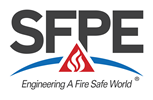FEMTC 2024
A numerical study on back-layering length with metro train blocking spacing in longitudinal ventilation subway tunnel fires 
Shiyi Chen - School of Civil Engineering, Central South University
Abstract
In the event of metro tunnel fire, the metro train may become obstructed, then prompting the trailing train to retreat and maintain a safe distance from the train engulfed in flames. These two train obstructions significantly impact smoke flow within the tunnel. This paper conducts numerical simulations to investigate the effects of fire source location and train spacing on back-layering length in longitudinally ventilated metro tunnels. A total of 270 simulation cases are considered, varying fire source positions (in the rear and middle of the train), train spacings (50-550m), heat release rate (5 and 10.5MW), and longitudinal ventilated velocities (0-2m/s). By studying temperature and flow rate distributions in tunnel, we gain insight into smoke behavior under different train spacing and ventilation conditions. Experimental findings reveal three scenarios: smoke staying within the fire train's length, spreading within the train spacing, or rising to the obstructing train. With the fire source situated at the rear of the train, the smoke's spread distance is significantly affected by the train spacing. When the fire source is situated in the middle of the train, and ventilation velocity is low with train spacings below 250m, smoke spreads to the obstructing train, back-layering length significantly influenced by spacing. The study proposes a segmented prediction formula for dimensionless smoke backflow length, taking into account the influence of train spacing.

